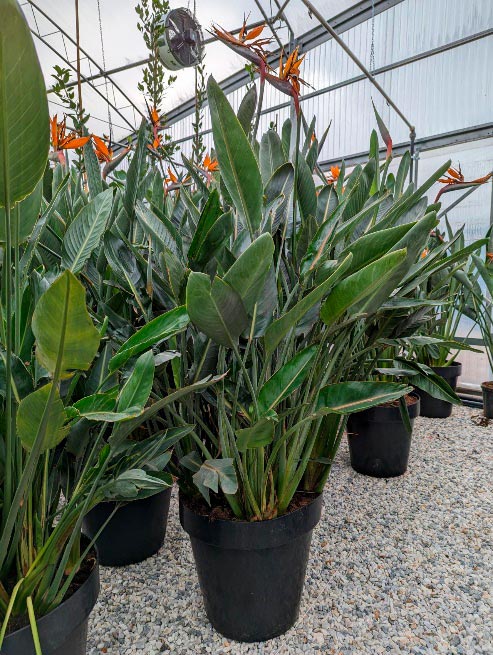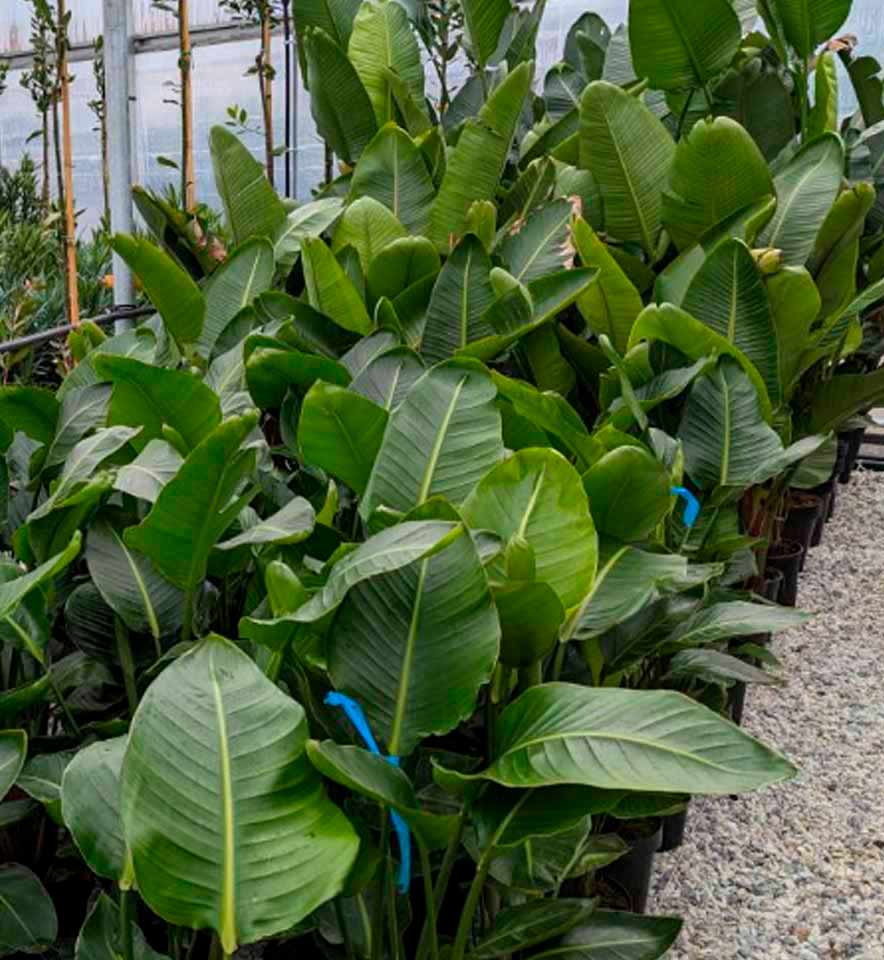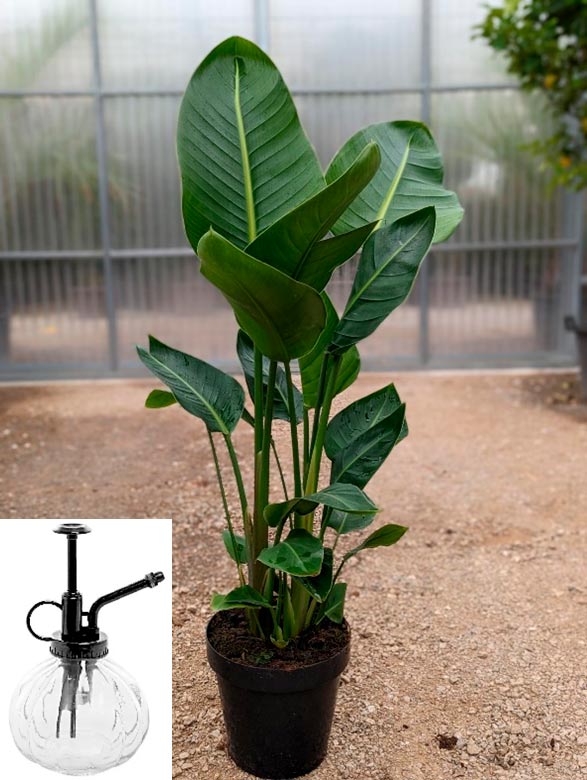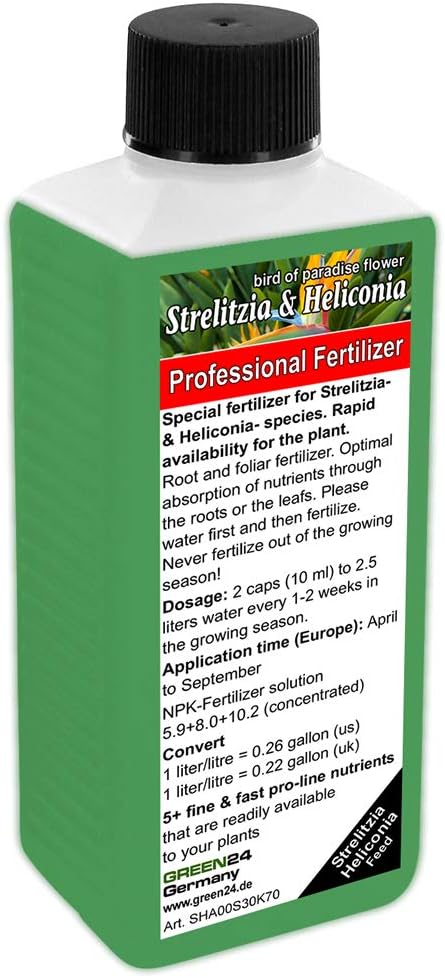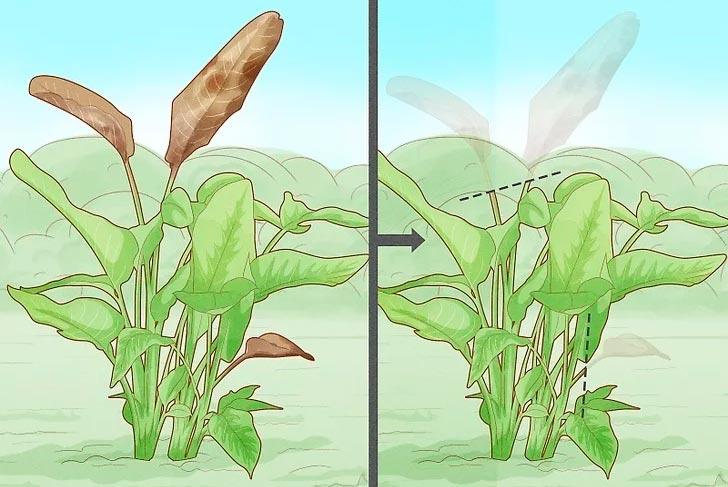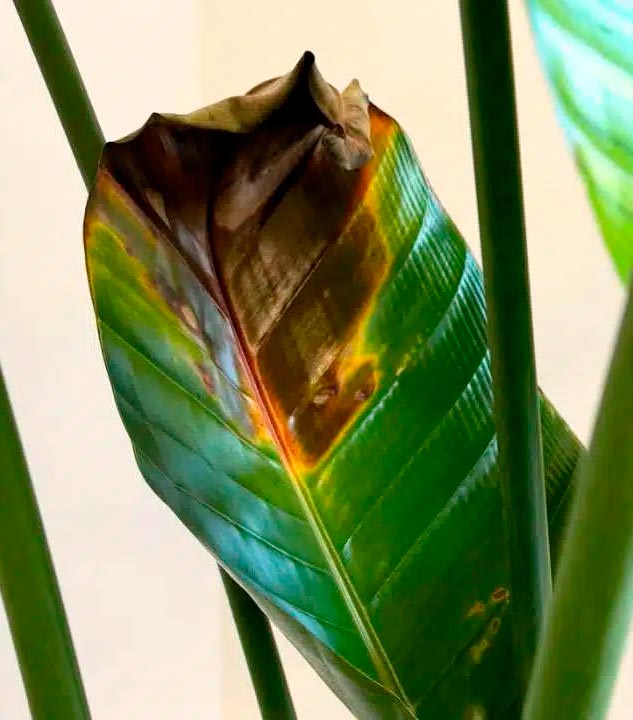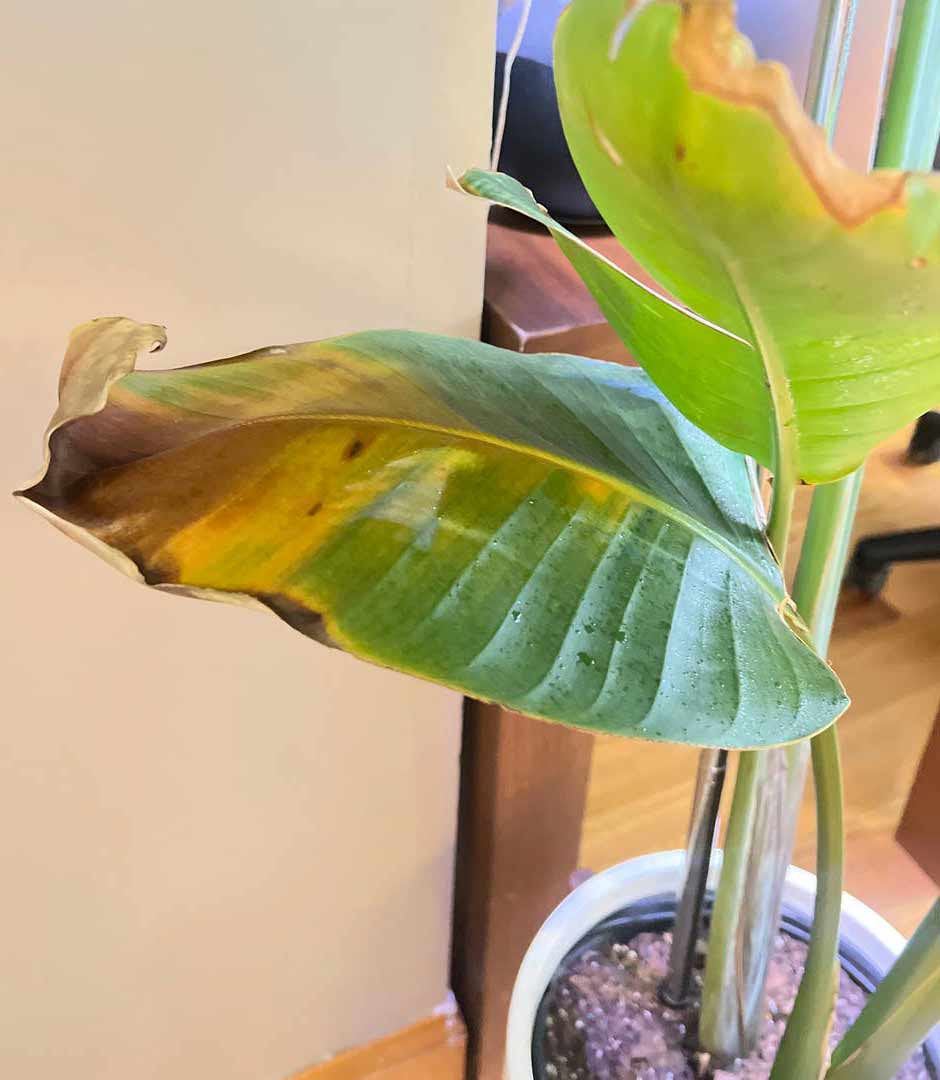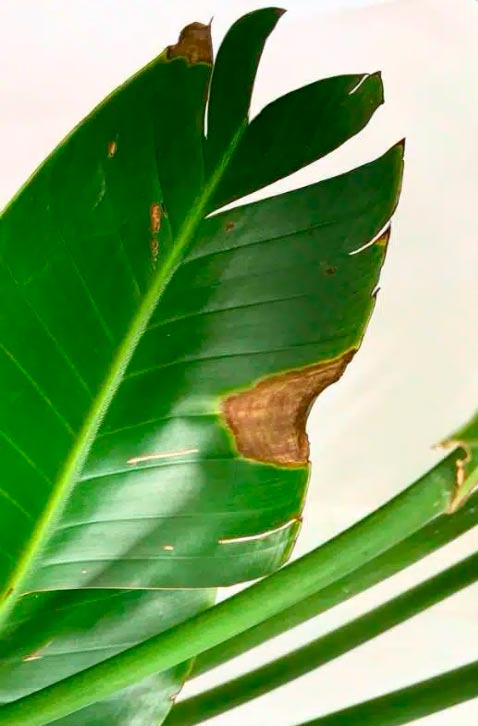Care & Maintenance of Strelitzia
The Strelitzia plant is an excellent option for adding an exotic flair to a bright, sunny room. The name “Bird of Paradise” originates from its unique flowers, which mimic the colour and shape of tropical birds. Native to South Africa, this plant thrives in warm and humid environments. Even when not in bloom, its large, blue-grey, paddle-shaped leaves on graceful stems make it a visually striking houseplant. Caring for a Bird of Paradise plant can be a rewarding experience. With the right conditions and care, it will reward you with its spectacular blooms and lush foliage.
Bird of paradise is a relatively high maintenance plant, as it needs regular misting and watering in spring and summer. Bear in mind that it’s toxic to cats and dogs if ingested. In this section, you’ll find everything you need to know about planting, growing, and maintaining Strelitzia. From watering and soil requirements to pruning techniques and common issues, our comprehensive guides will help you keep your plant healthy and beautiful.
When & Where to Plant Strelitzia?
Bird of paradise is an expensive plant, so make sure you have the right growing conditions for it. It needs plenty of room as it can reach 2-3 tall depending on the variety. It thrives in warm conservatories or bright bathrooms where a humid environment is present. Plant in a full sun location in spring or early summer.
In the summer, you can place your bird of paradise plant outside to enhance your garden with an exotic touch. Simply sink the entire pot into a sunny spot in the soil. As autumn approaches and temperatures start to drop, be sure to bring it back indoors.
Soil:

£8.95
- Bird of paradise plants thrive in rich, loamy soil that drains well and has a pH between 5.5 and 7.5.
- They prefer a well-draining mix that includes peat moss, perlite, and garden soil.
- These components help excess water to drain away while still retaining sufficient moisture for the plant’s roots.
- Avoid heavy, clay-based soils, as they tend to retain too much moisture and can lead to root rot.
Location:
- Place your strelitzia in a warm, bright location. It should get at least four hours of exposure from southern, western, or eastern directions, but be cautious of strong afternoon sun, which can damage the leaves.
- Regularly dust the leaves to maximize light absorption and avoid placing it near air vents or drafts.
- Keep winter temperatures above 10°C, and provide a humid environment, making a sunny bathroom or conservatory ideal.
- Birds of paradise are best kept indoors in the UK, but can be moved outdoors during hotter and more humid summers.
Choosing the Right Pot 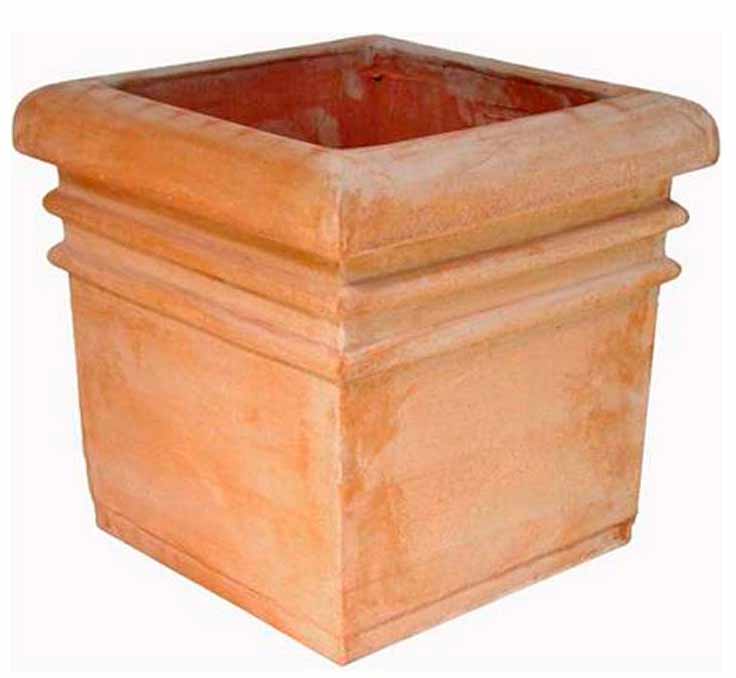
From: £72.95
- The Bird of Paradise plant grows thick, tuberous roots that can quickly occupy the space in a pot.
- When grown in nursery pots, these plants tend to fill the entire pot, so it’s crucial to select a container with a larger interior diameter than the grow pot.
- The Bird of Paradise looks particularly striking in low planters that highlight its foliage or in taller, tapered planters that accentuate its height.
- For Strelitzia Nicolai, it recommends to re pot every 18-24 months. However, since the Bird of Paradise prefers to be slightly pot-bound, you can wait up to 28 months if the plant is healthy.
- When repotting, choose a pot that is 2-4 inches larger in diameter to allow for growth.
- If you wish to maintain the plant’s current size, repot it into the same vessel with fresh soil, trimming some roots and foliage. The best time for repotting is in spring or summer when the plant is at its strongest.
Humidity
- Considering their tropical origins, it’s surprising how well Strelitzia adapt to typical home environments.
- Keep your plant away from drafts, open windows, and heaters.
- The ideal humidity level for Strelitzia is around 60-70%, but they can tolerate lower levels, though not below 50%.
- Low humidity can cause the leaves to become dry and brittle, and excessive leaf splitting or curling can also indicate insufficient humidity.
- To increase humidity, use a pebble tray or a humidifier.
- You can also mist the leaves occasionally with water, but do so early in the morning or late in the evening to avoid sunburn caused by water droplets reflecting sunlight.
Watering
- Expect to water daily in the spring and summer, as they lose moisture through their large leaves.
- During active growth periods, water your Strelitzia thoroughly and allow the top inch or two of the potting mix to dry out before watering again.
- Aim to water your plant once a week to 10 days depending on the time of year.
- Water it when the soil is 50% dry, ensuring you water until liquid flows through the drainage hole at the bottom of the pot, and discard any water that accumulates in the saucer.
- In winter, growth may slow down or stop if temperatures are cold. During this time, it’s crucial not to overwater, as this can cause the roots to become mushy and rot.
Feeding
- This plant is a heavy feeder and benefits from regular feeding.
- In the spring, use slow-release pellets, or apply liquid fertilizer weekly during the growing season.
- Birds of Paradise enjoy occasional feeding during this period, which helps keep them healthy and strong.
- If you notice brown markings on the leaves, it may indicate that your fertilizer is too strong.
- Although regular watering typically prevents fertilizer burn, it’s wise to ensure the potting mix isn’t excessively dry before feeding as a precaution.
- The best indicator that your plant needs feeding is the emergence of new leaves.
Flowering
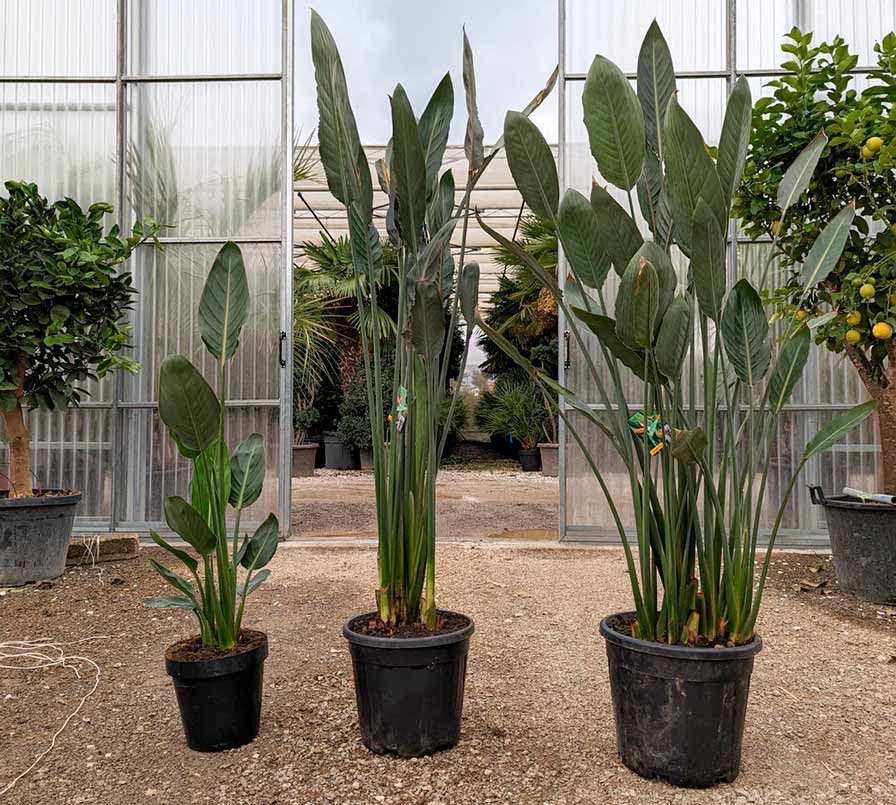
Strelitzia flowers truly are a sight to behold. Your plant needs to be at least 4 or 5 years old before they are capable of producing flowers.
If you want your Strelitzia to flower, we recommend choosing our larger options. The plant needs to be more established to bloom, and our larger specimens are already at the maturity level required for flowering. This ensures you can enjoy the beautiful blooms of your Strelitzia without the long wait.
- Younger plants can be re potted, when necessary, but as the plant matures, be mindful of frequent re-potting. This is because restricting the roots is vital in encouraging the plant to bloom.
- A common mistake that people make with their Bird of Paradise is to repot them too frequently. When the plant has reached its full maturity and height, look out for the growth of a spathe. Take extra care of the spathe if repotting.
- Once they do bloom, if you disturb the roots in any way, such as by repotting the plant, the plant may not bloom again for two to three years.
Pruning
- Red Bird of Paradise flowers are very hardy and can handle heavy pruning two times per year if the plant is healthy.
- Wipe the leaves with a damp cloth to remove dust, which is especially important for Strelitzia Reginae due to its smaller leaf size.
- The leaves of the Bird of Paradise often split along their natural lines of weakness, a healthy characteristic that allows the plant to withstand strong winds in its native environment.
- Prune dead or damaged leaves to encourage growth. Bird of Paradise flowers last for about three weeks before dropping their petals and dying, so remove old or damaged plant matter to thin the leaves.
- Pull off the leaves or use garden scissors. If a leaf appears mostly healthy, leave it intact.
- You can cut all leaves and stems down to just above the ground. If the plant remains too crowded, use long-handled pruners to remove selected stems and leaves.
Please Note:
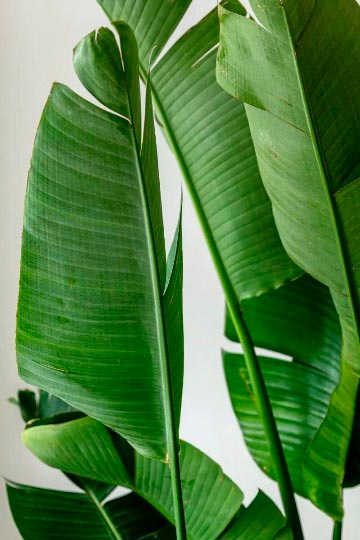
Splitting leaves on the Bird of Paradise is completely normal and natural. These splits are an evolutionary adaptation that allows wind to pass through the leaves, preventing them from acting as giant sails. Over time, older leaves will develop more splits and can be pruned as new leaves emerge and fill out the plant. If you notice rapid leaf splitting, ensure the plant is away from air vents and drafts, and that it is receiving adequate light and water. Increasing the humidity around your plant with a humidifier or frequent misting can also help prevent and slow down leaf splitting.
Some Frequent Issues with the Strelitzia
Common Pests and Plant Diseases
The Bird of Paradise can occasionally be susceptible to pests such as mealybugs, aphids, spider mites, scale, thrips, and blackfly. If you notice an infestation, isolate the affected plant from your other houseplants and treat it promptly with a generous application of neem oil.
Thank you for choosing our Strelitzia to enhance your garden! We hope you find our care and maintenance guide helpful. For any further questions or assistance, please don’t hesitate to contact us. We’re here to help you enjoy the full beauty and bloom of your hydrangeas!


